15 Best Sights in Amsterdam, Netherlands
Sorry! We don't have any recommendations for Amsterdam right now.
We’ve compiled the best of the best in Amsterdam - browse our top choices for the top things to see or do during your stay.
Begijnhof
This tree-filled courtyard is a residential hideaway where women of the Beguine order lived a chaste, spiritual life from the 14th century onward. Number 34 is the oldest house in Amsterdam—one of two remaining wooden houses in the city following 15th-century fires that consumed three-quarters of the city. The small Engelse Hervormde Kerk (English Reformed Church) dates to the 14th century, when it was a place of worship for the Begijnen. After the Alteration of 1578 the church was relinquished to Protestants. When senior Begijn Cornelia Arents died in 1654, she said she'd rather be buried in the gutter than in the (now Protestant) church. Her wish was granted; look for the granite slab and plaque on the wall between the church and lawn.
Bloemgracht
Lined with traditional burgher houses of the 17th century, this quaint canal is beloved by locals and visitors alike. Many say it's the most pictureseque canal in the city. This was once a center for paint and dye manufacturers, which makes sense because the Jordaan was populated with Golden Age artists—including Rembrandt, who had a studio here. Bloemgracht is still proudly presided over by "De Drie Hendricken," three houses set at Nos. 87–91 owned by the Hendrick de Keyser heritage organization, with their gable stones for a farmer, a city settler, and a sailor.
Recommended Fodor's Video
Brouwersgracht

Regularly voted Amsterdam's most beautiful street, this wonderful canal at the northern border of the Jordaan is lined with residences and former warehouses for the brewers, fish processors, and tanneries who operated here in the 17th century when Amsterdam was the "warehouse of the world." On top of the old canal, mansions dotting the Brouwersgracht are symbols referring to the breweries that used this waterway to transport their goods to thirsty drinkers hundreds of years ago. Although most of the buildings have been converted into luxury apartments, an old-world charm still reigns. Of particular note are buildings at Nos. 204–212, with their trapezium gables. At No. 162, there are two dried fish above the door; this decoration on a metal screen was the forerunner of the gable stone to denote occupation. The canal provides long views down the grand canals that are perfect for photo ops.
EYE Film Institute Netherlands
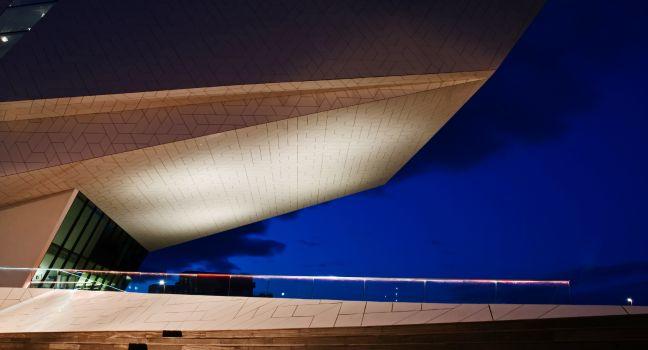
In an eye-popping, proto-futuristic waterfront structure designed by Viennese architects Delugan Meissl, this cutting-edge museum and archive is easily accessible, thanks to a free two-minute ferry ride from Centraal Station. Along with restoring thousands of films (Martin Scorsese used footage from Georges Méliès films restored here in his film Hugo), the institute contains four massive screening rooms (showing a fine mix of classic and contemporary films), a large permanent display with historical objects, set photos and interactive elements from the cinematic world, and a library open to the public. The EYE, whose name is a pun on the pronunciation of IJ, also organizes wonderful changing exhibitions about film-related subjects. They do not take cash—just credit or debit cards. There is also a restaurant with a waterfront terrace and terrific views.
Hermitage Amsterdam

Taking advantage of 300 years of historical links between Amsterdam and St. Petersburg, the directors of the State Hermitage Museum in St. Petersburg and of the Nieuwe Kerk museum in Amsterdam chose this spot on the Amstel for a new outpost. In 2009, the final refurbishment stage of the former home for the elderly Amstelhof was completed, with high white interiors and smaller side rooms connected by long unadorned corridors. The amount of exhibition space is actually much smaller than you might imagine from the outside (or from the entry price), but the quality of the shows is generally excellent.
Het Scheepvaartmuseum
Designed by Daniël Stalpaert in 1656 as an arsenal for the Admiralty of Amsterdam, this excellent example of Dutch Classicism became the new home of the Maritime Museum in the 1970s. Even if you're not much of a nautical fan, the building alone is worth a visit. The courtyard (free) of the biggest remaining 17th-century arsenal was roofed over with a 200,000-kg (440,925-pound) glass-and-steel construction, the design of which is a reference to wind roses and compass lines on old nautical charts. In the daytime, the roof casts ever-changing shadows on the courtyard floor (weather permitting); at night, hundreds of LED lights on the rafters create the fairy-tale illusion of a star-spangled sky.
The museum itself has one-room exhibitions, each with a different theme. The East wing houses an impressive collection of maritime objects, with paintings (the pen drawings by 17th-century master marine painters Ludolf Backhuysen and Willem van de Velde the Elder are particularly beautiful), one of the most important globe collections in the world, nautical instruments, yacht models, and all sorts of symbolic ship decorations. Moored on the jetty outside is the Scheepvaartmuseum’s biggest draw: a life-size replica of a 1748 ship of the Dutch East India Company (VOC). The original left for Asia shortly after it was built, but wrecked off the English coast. Exploring the ship while trying to imagine how people were able to live here for months on end is fascinating.
NEMO Science Center
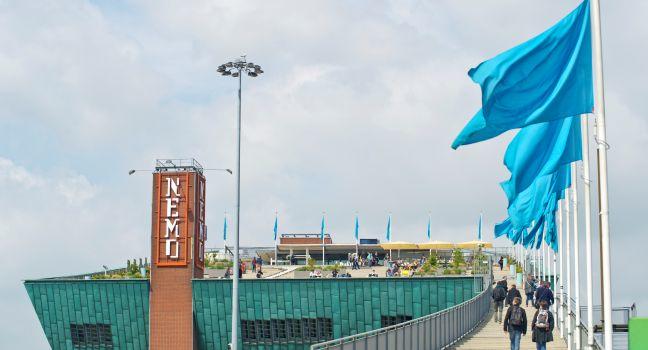
Opened in 1997, this copper-clad building designed by world-renowned architect Renzo Piano (co-creator of Centre Pompidou in Paris, among many other notable projects) is an international architectural landmark—a curved green shape like a ship's bow seemingly rising out of the water, over the IJ Tunnel entrance to Amsterdam North. A rooftop café and terrace offer a superb panorama of the area. It's worth a visit just for the view, but there are also five floors of fantastical, hands-on, high-tech fun, which make this a science wonderland, especially for kids. Attractions range from giant "bubbles" on the ground floor to experiments in the Wonder Lab and interactive exhibitions like Teen Facts.
Rijksmuseum
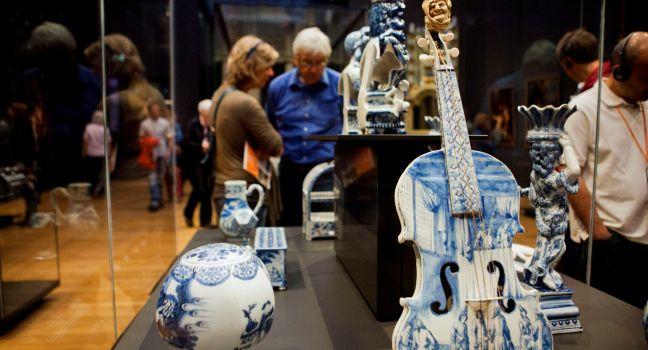
The famed Rijksmuseum houses the largest concentration of Dutch masterworks in the world, as well as paintings, sculpture, and objects from the East and West that provide global context for the history of the Netherlands. Long the nation's pride, this museum has abandoned the art/design/history divisions and has instead combined them into one panoply of art and style presented chronologically, from the Middle Ages to the 20th century. Don't be surprised, in other words, if you spot a vase in a 17th-century painting by Gerard Dou and, next to it, that very same Delft blue-and-white vase itself.
When architect P.J.H. Cuypers came up with a somewhat over-the-top design in the late 1880s, it shocked Calvinist Holland. Cuypers was persuaded to tone down some of what was thought as excessive (i.e., Catholic) elements of his Neo-Renaissance decoration and soaring Neo-Gothic lines. During the building's construction, however, he did manage to sneak some of his ideas back in (including a cheeky statue of himself peeking around a corner), and the result is a magnificent turreted building that glitters with gold leaf and is textured with sculpture.
If your time is limited, head directly for the Gallery of Honor on the upper floor to admire Rembrandt's The Night Watch with its central figure, Frans Banningh Cocq. His militia buddies each paid 100 guilders to be included alongside him—quite a sum in those days, so a few of them complained about being lost in all those shadows. It should be noted that some of these shadows are formed by the daylight coming in through a small window. Daylight? Indeed, The Night Watch is actually the Day Watch, but it received its name in the 18th century when the varnish had discolored—imagine the conservators' surprise. The rest of this "Best of the Golden Age" hall features other well-known Rembrandt paintings as well as works by Vermeer, Frans Hals, and other great artists of the 17th century.
The 20th-century section on the third floor of the two towers includes works by Mondrian and the CoBrA movement, a Nazi chess set (with tanks and cannon instead of castles and bishops), and even a complete Dutch-designed fighter plane, built in 1917 for the Royal Air Force.
In one wing of the ground floor are the Special Collections—room after room of antique furniture, silverware, and exquisite porcelain, including Delftware. An overlooked (and freely accessible) part of this museum is its sculpture garden formed in the triangle by Hobbemastraat and Jan Luijkenstraat. There's a mini-museum in Schiphol Airport (behind passport control), Holland Boulevard between Piers E and F, which is free and open from 6 am to 8 pm daily.
You get a €1 discount if you buy your ticket online (and you get to skip the sometimes long lines).
Royal Concertgebouw
This globally acclaimed concert hall has been home to the Royal Concertgebouw Orchestra, one of the world's greatest, since 1888, and has welcomed an endless stream of top international artists. With a Viennese classicist facade and golden lyre at its peak, this sumptuous example of Neo-Renaissance style, designed by A. L. van Gendt, is a music mecca to more than 700,000 visitors per year. There are three concert halls, and you can attend a free lunchtime concert in one of them (usually Wednesday, September–June) while taking in the atmosphere. Building tours (in English) take place Monday at 5 pm, Wednesday at 1:30 pm, Friday at 5 pm, and Sunday at 12:30 pm; they cost €11.
Stedelijk Museum of Modern Art

Amsterdam's celebrated treasure house of modern art is housed in a wedding-cake Neo-Renaissance structure built in 1894. In true Amsterdam fashion, locals were quick to nickname the futuristic addition, by globally acclaimed architects Benthem/Crouwel, the "Badkuip" (Bathtub); it incorporates a glass-walled restaurant (which you can visit, along with the museum shop, without a ticket). The new Stedelijk has twice the exhibition space of the old museum, with temporary exhibitions in the extension.
As for the Stedelijk's old building, it's home to the museum's fabled collection of modern and contemporary art and design pieces. While this collection harbors many works by such giants of modernism as Chagall, Cézanne, Picasso, Monet, Mondrian, and Malevich, there is a definite emphasis on the post–World War II period: with such local CoBrA artists as Appel and Corneille (CoBrA was the avant-garde art movement from 1948 to 1951; the name comes from the initials of the members' home cities:
Van Gogh Museum
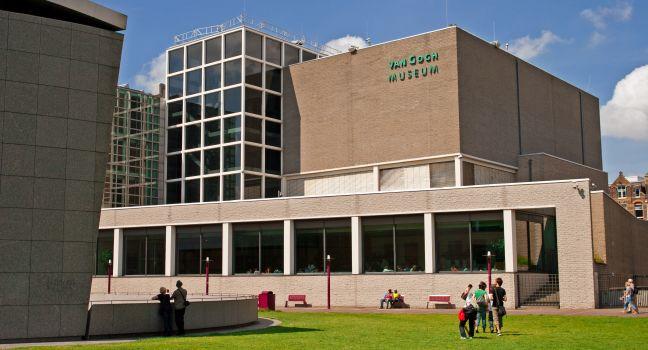
Opened in 1973, this remarkable light-infused building, based on a design by famed De Stijl architect Gerrit Rietveld, venerates the short and productive career of tortured 19th-century artist Vincent van Gogh. Although some of the Van Gogh paintings scattered throughout the world's museums are of dubious provenance, this collection's authenticity is indisputable: its roots trace directly back to Vincent's brother, Theo van Gogh, who was his artistic and financial supporter.
The 200 paintings and 500 drawings on permanent display here can be divided into five basic periods, the first beginning in 1880 at age 27 after his failure in finding his voice as schoolmaster and lay preacher. These early depictions of Belgian and Dutch country landscapes and peasants were notable for their dark colors and a refusal to romanticize. The Potato Eaters is perhaps his most famous piece from this period. In 1886, he followed his art-dealing brother, Theo, to Paris, where the heady atmosphere—and drinking buddies like Paul Signac and Henri de Toulouse-Lautrec—inspired him to new heights of experimentation. While heavily inspired by Japanese woodcuts and their hard contrasts and off-kilter compositions, he also took the Neo-Impressionist obsession with light and color as his own, and his self-portraits (he was the only model he could afford) began to shimmer with expressive lines and dots. With a broadened palette, Vincent returned to the countryside in 1888 to paint still lifes—including the famous series of Sunflowers (originally meant to decorate the walls of a single bedroom in the Maison Jaune he had set up to welcome Paul Gauguin)—and portraits of locals around Arles, France. His hopes to begin an artists' colony there with Paul Gauguin were dampened by the onset of psychotic attacks, one of which saw the departure of his ear lobe (a desperate gesture to show respect for Gauguin—in southern France, matadors had ears cut off of bulls and presented them to their lady loves). Recuperating in a mental health clinic in Saint-Rémy from April 1889, he—feverishly, one assumes—produced famous works like Irises and Wheatfield with a Reaper, whose energetic brushwork powerfully evoke the area's sweeping winds. In May 1890, Van Gogh moved to the village of Auvers-sur-Oise, where he traded medical advice from Dr. Paul Gachet for paintings and etching lessons. The series of vibrantly colored canvases the pained painter made shortly before he died are particularly breathtaking. These productive last three months of his life were marred by depression, and on July 27, he shot himself while painting Tree Roots and died two days later.
In 1999, the 200th anniversary of Van Gogh's birth was marked with a museum extension designed by the Japanese architect Kisho Kurokawa, which provides space for superb temporary exhibitions. In 2015, a glass structure was added to create a new entrance hall on the Museumplein side and to connect the original museum building to the Kurokawa wing.
Tickets are timed and can (and probably should) be purchased in advance since time slots fill up very early in the busy seasons.
Westergasfabriek
This former gas factory from 1885 is now an arts and cultural center comprising 13 monumental buildings of various shapes and sizes, which house media companies, art exhibitions, food markets, and assorted festivals. There are also bars, nightclubs, restaurants, and a cinema.
Westergasfabriek
Westerpark
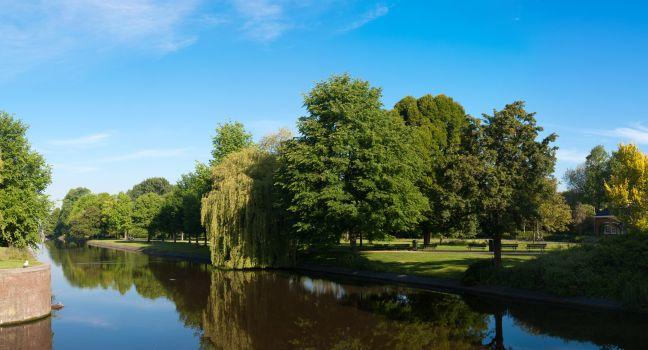
Just beyond the Jordaan and across from the main canal that borders the Western Islands is one of contemporary Amsterdam's most cherished spaces. It's a park first and foremost, with lawns, playgrounds, water fountains, a fabulous designer paddling pool, a barbecue area, and a couple of tennis courts. The sprawling terrain of the city's old Western gasworks has been turned into the Westergasfabriek: cafés, galleries, clubs, shops, and an art-house cinema occupy the former industrial landscape that has been lovingly detoxed, replanted, and refurbished building by building. There's even a bit of natural wilderness (or at least the organized Dutch brand of "wilderness") behind the park, with a community farm, a petting zoo, a natural playground for kids, and some polder areas with footpaths between them. The lovely late-19th-century Sint Barbara cemetery is here, too.



